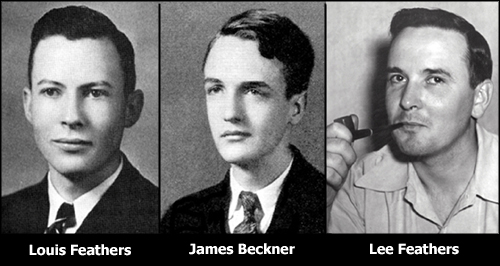Louis Feathers, former resident of the city, once worked for the Johnson City Press-Chronicle. He shared his memories of working for the newspaper.
“My source of spending money from 1932 until 1938,” said Louis, “was from delivering papers. My first route was inherited from Dan Meador who moved from the city to a farm near Watauga. It involved delivering ‘Grit,’ for which there were a few customers spread over a large area. The quality weekly tabloid-size family publication is still being printed in Williamsport, PA. Back then it cost five cents.”

Feathers explained that his next paper route was a joint effort with his brother, Lee, delivering the Johnson City Staff-News. It was an afternoon edition that soon experienced competition from a new city newspaper, The Johnson City Press-Chronicle, started by Carl A. Jones and Charles Harkrader. It soon acquired the Staff-News and its companion morning newspaper, The Chronicle, which produced morning and afternoon editions.
“Shortly after quitting my job at a textile mill located in the “Y” section in the southwest part of town,” said Louis, “I received a telephone call from Judge C.F. Callaway at the Press-Chronicle about a position in the business office. He was referred to as judge because he had previously been a Justice of the Peace. I was told the firm had just discharged an employee and wanted to talk to me about the open position.
“It looked like an interesting job so I accepted it at a pay rate of $18.50 per week, not too bad considering the fact that the country was not yet out of the Great Depression. My responsibilities involved verifying an advertiser’s space and logging it in a journal, delivering copies of tear sheets (cut or torn pages from the publication to prove to the client that the advertisement was published) to advertisers, assisting wherever needed in the Advertising and Circulation departments and working in the Photo Engraving Shop. The latter job consisted of sending half-tone plates to other newspapers and printing shops that utilized our services. In short, I was a ‘go-fer’ for them.”
Louis described the composing room as a loud and foul place consisting of a bank of about six Linotype machines setting and casting the type for all the news matters in the paper. He described a large container of melting “pot metal” from which the plates for the printing press would be cast. The large print for headlines and advertising were typeset by hand. Feathers worked in the Press-Chronicle office from mid 1939 until he left for the military in January 1942.
In the 1970s, Louis revisited his former place of business and was escorted by his good friend Jim Beckner. By this time, the composing room had been converted into an art studio. A page make-up consisted of “pasting up all the material that was to be on the page. “It was then photographed for engraving on a thin sheet of metal,” said Louis. “This replaced the heavy half-cylinder casting that was used in the former process. The changeover occurred about 1950.”
Lee Feathers was employed in the composing room and belonged to the Pressman’s Union. The organization objected to the changeover because it eliminated several jobs and went on strike, but to no avail.
When Louis was drafted on Jan. 19, 1942, his strong desire to enlist in the Army Air Corps evaporated because his 1-A classification directed him into the Army. He was listening to bandleader Sammy Kaye’s “Sunday Serenade” on NBC radio that fateful Dec. 7, 1941 afternoon and heard the chilling news that Japan had attached Pearl Harbor. He later wrote in his journal: “News that your country is at war can ruin your afternoon.”
